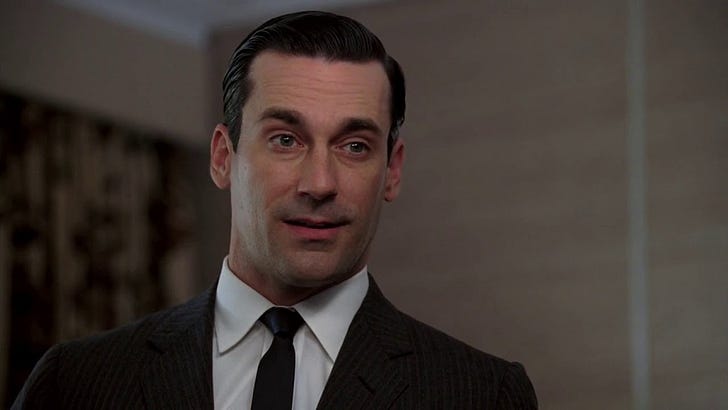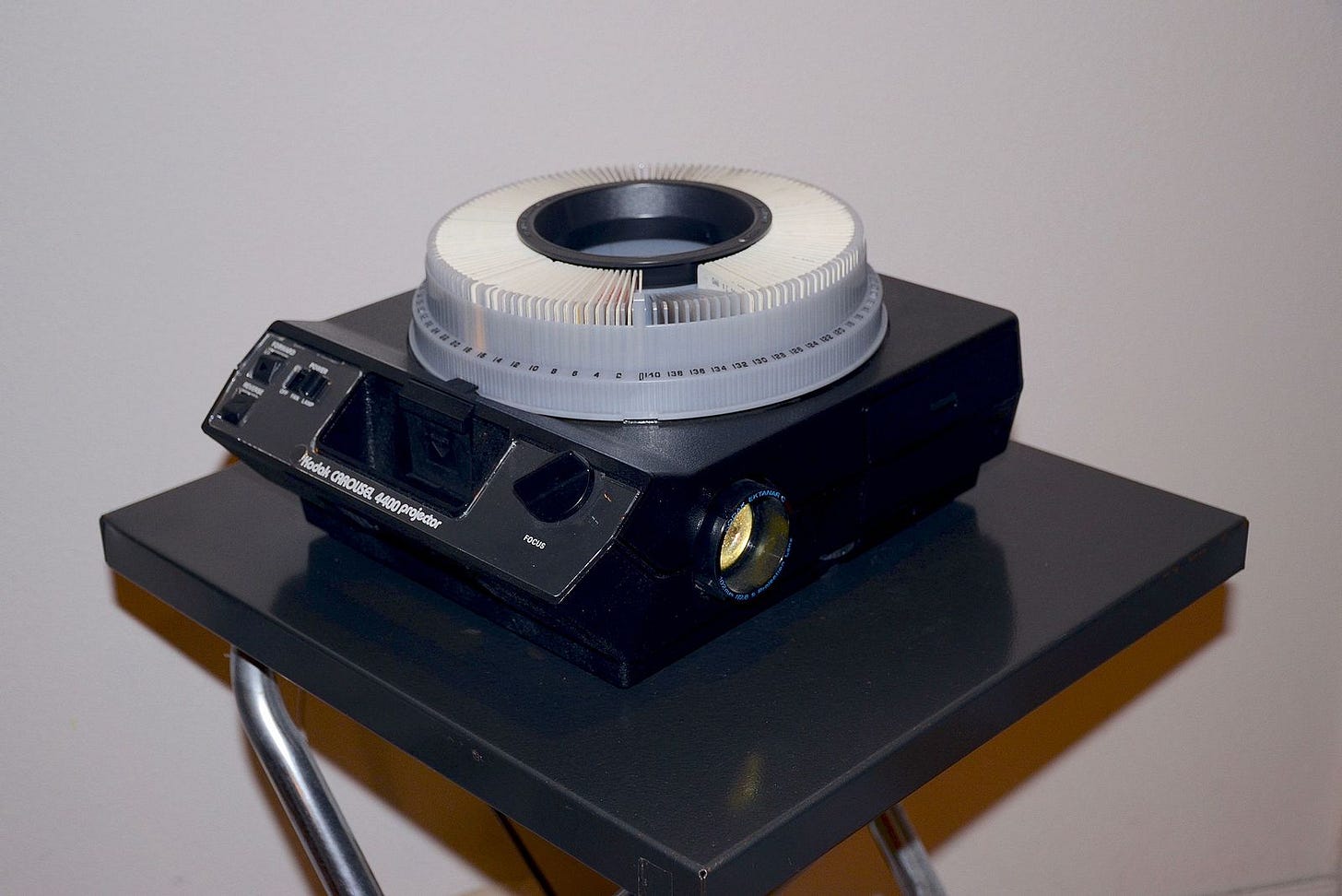In the season one finale of Mad Men, Don Draper delivers one of the most iconic product pitches in television history—the Kodak Carousel. But beyond its brilliance as a dramatic moment, Draper’s pitch is a masterclass in emotional storytelling and a timeless lesson for anyone in product.
For those who haven’t watched Mad Men: it’s a TV-show set in ’60 America and centers around Don Draper, Creative Director for an advertising agency.
The Pitch: A Nostalgic Journey
Kodak’s marketing executives come to Sterling Cooper hoping to position their new slide projector as cutting-edge technology. They refer to it as the “wheel.” But Draper sees something deeper. Instead of focusing on the mechanics of the product, he taps into its emotional core.
As he clicks through slides of his own family, he calls the device not a wheel, but a carousel—a machine that allows people to travel through time, reliving their most cherished memories. He invokes the Greek word nostalgia, explaining that it means “the pain from an old wound,” a bittersweet longing for the past. In that moment, the room falls silent. Kodak’s executives, and even Draper’s colleagues, are visibly moved. The pitch is a success—not because of specs or features, but because of its emotional resonance.
The Power of Emotional Connection
Don Draper’s pitch works because it connects on a human level. Kodak didn’t need a better technological description of its product—it needed a narrative that made people feel something. The lesson here is clear:
Great products solve human, not just functional, needs. A successful product doesn’t just provide a utility—it fulfills an emotional desire. The Kodak Carousel isn’t just a slide projector; it’s a tool for preserving and reliving the beauty of life’s fleeting moments.
Users don’t just seek efficiency; they seek meaning. It’s not always about speed, performance, or features—people engage with products that enrich their lives in a deeper way.
Emotional connection drives product adoption and loyalty. Research has shown that people make decisions based on emotions first, then justify them with logic. Draper’s approach doesn’t just explain the product; it makes the audience feel something, ensuring they remember it long after the meeting is over.
Emotional Connection: Understood in Marketing, Emerging in Product Management
Emotional connection has long been a cornerstone of marketing, where brands leverage storytelling and psychology to engage customers. In tech product design, elements of emotional engagement—such as personalization and delight—are increasingly incorporated. However, in product management as a discipline, the role of emotion is not yet widely recognized or systematically applied. Many product managers still prioritize efficiency, scalability, and usability without explicitly considering how their product makes users feel.
This gap presents an opportunity. The best product managers recognize that beyond functionality, a product’s emotional impact can be the key to long-term success.
Applying This to Modern Product Management
In today’s digital world, where users have endless choices, products that forge emotional connections stand out. Consider how Spotify creates playlists that feel personally curated, how Notion enables users to organize their lives in a way that feels uniquely theirs, or how Duolingo makes learning fun and engaging through gamification.
So, if you’re building a product, ask yourself:
What emotional need does my product fulfill?
How can I craft an experience that resonates beyond functionality?
Am I focusing solely on features, or am I considering how the product makes users feel?
The Kodak Carousel scene is a reminder that the best products don’t just serve a purpose—they become part of people’s most meaningful experiences. If you can tap into that level of connection, your product will be remembered—not just for what it does, but for how it makes users feel.
And that’s the real magic of great product management.




